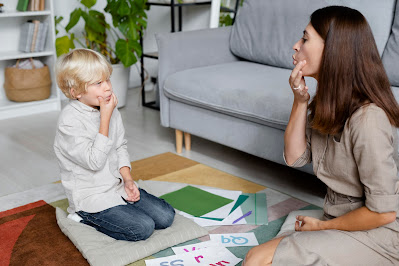Exploring the Connection Between Gross Motor Skills and Speech Development
When discussing child development, we often separate physical milestones from communication achievements. However, research shows a significant connection between gross motor skills and speech development. Both abilities share a foundation in brain development, body coordination, and sensory input. By understanding this link, parents and professionals can create strategies that support a child’s overall development.
What Are Gross Motor Skills?
Gross motor skills involve the large muscle groups that help with movements such as walking, running, and jumping. These muscles enable children to maintain balance, posture, and coordination. As babies grow into toddlers, their gross motor skills evolve from crawling to standing, and eventually, to running and climbing.
How Gross Motor Skills Impact Speech
Although gross motor skills seem unrelated to speech, they play a foundational role in communication. The same muscles responsible for body movement—like those controlling posture and breathing—also assist in vocalization. Here’s how:
Posture and Breathing
Good posture is essential for effective speech. Children who struggle with sitting upright or maintaining balance may also have difficulty controlling their breath, which is critical for speech production. If a child cannot regulate their breathing, they might find it hard to produce clear sounds or sustain conversation.Oral Motor Coordination
Speech requires finely-tuned motor movements of the mouth, tongue, and throat. A child’s ability to control their head and neck muscles, part of their gross motor skillset, affects their capacity to articulate sounds correctly.Sensory Integration
Gross motor activities, like playing on a swing or running, help children process sensory information. Sensory integration—the brain’s ability to interpret and respond to sensory stimuli—can influence speech development. Kids who struggle with motor activities might also face challenges with processing the sensory feedback that informs speech.
Early Signs of Gross Motor and Speech Delays
It’s important to recognize the early signs of delays in both areas, as addressing these issues early can make a significant difference. A child who struggles with gross motor tasks like walking or balancing may also have delayed speech. Additionally, children with speech delays may display challenges with tasks such as catching a ball or climbing stairs.
How to Support Development
Supporting a child’s gross motor and speech development often requires a holistic approach. Regular physical activity, play, and targeted exercises can strengthen gross motor skills, which in turn can boost speech capabilities. Speech and language therapists, alongside professionals specializing in occupational therapy in Ajman, can offer tailored programs that incorporate both motor and speech interventions.
Incorporating fun activities like obstacle courses, dance, or simple sports can encourage a child’s physical growth, while also engaging them in conversations to promote language development. Speech therapists may also introduce breathing exercises, which not only help with speech but enhance overall motor coordination.
Conclusion
The connection between gross motor skills and speech development highlights the importance of an integrated approach to child development. By focusing on both areas simultaneously, parents and therapists can foster a supportive environment where children thrive in their physical and communicative abilities. If you notice that your child struggles with either gross motor skills or speech, early intervention can make a tremendous impact on their overall growth.





